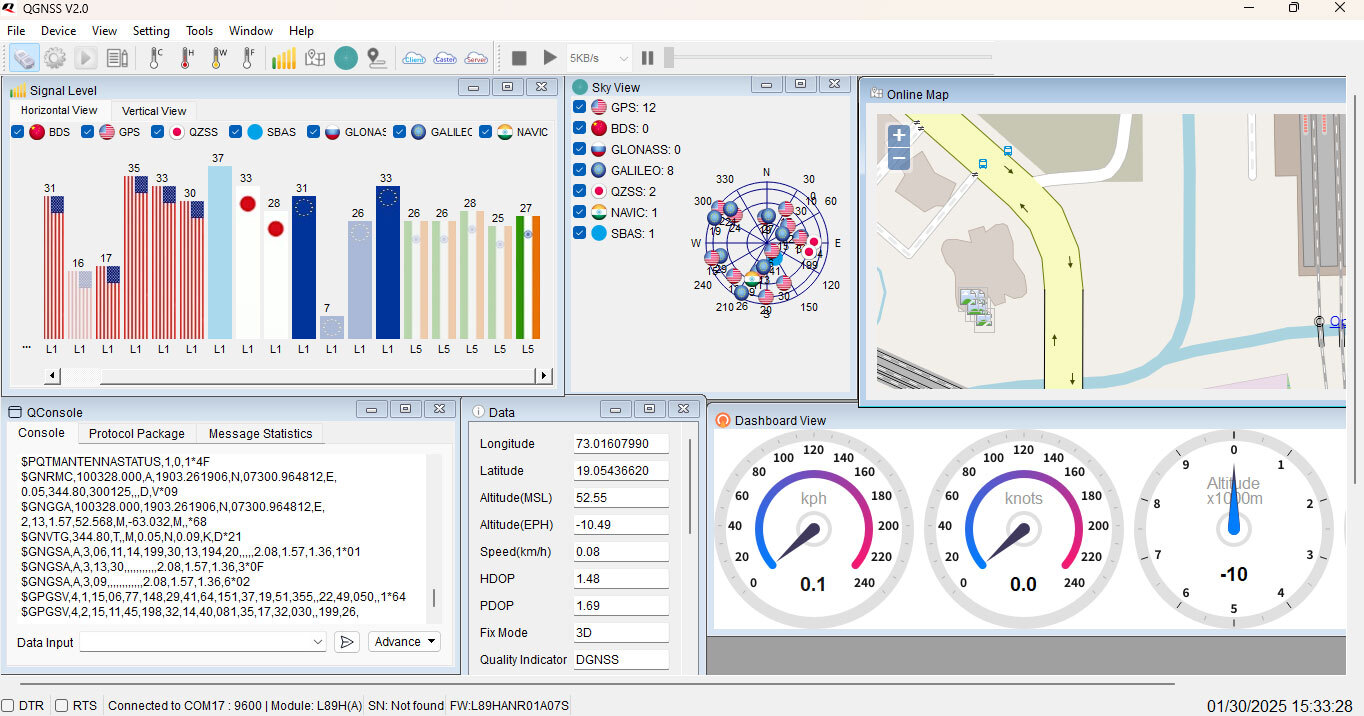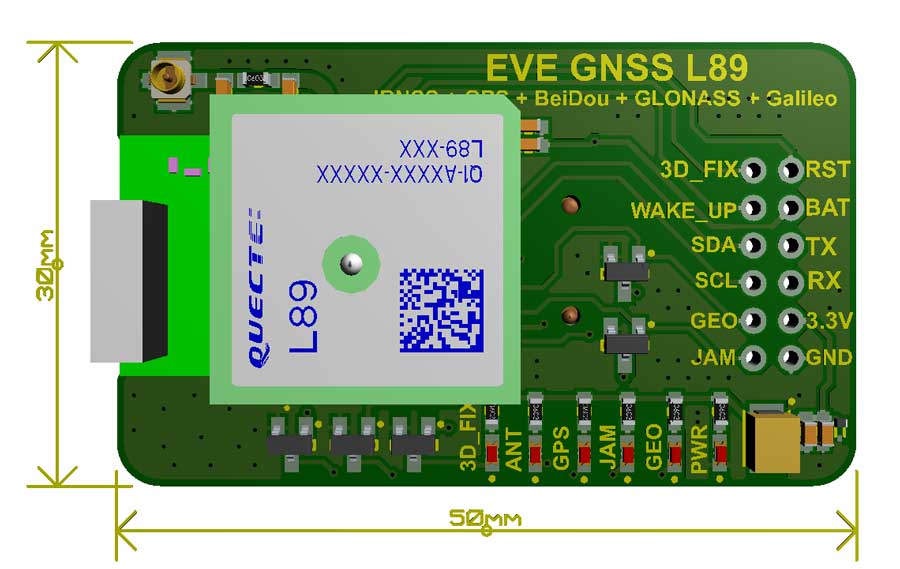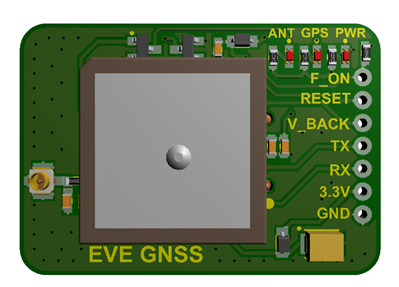Technical Specifications
Warranty Information
All the products supplied by Evelta are genuine and original. We offer 14 days replacement warranty in case of manufacturing defects. For more details, please visit our cancellation and returns page.
All the products supplied by Evelta are genuine and original. We offer 14 days replacement warranty in case of manufacturing defects. For more details, please visit our cancellation and returns page.
Note: Battery is not included in the package



#include <SoftwareSerial.h> // Include the SoftwareSerial library
#define ARDUINO_GPS_RX 9 // Arduino RX pin connected to GPS TX
#define ARDUINO_GPS_TX 8 // Arduino TX pin connected to GPS RX
#define GPS_BAUD_RATE 9600 // The GPS Shield module defaults to 9600 baud
// Create a SoftwareSerial object called gps:
SoftwareSerial gpsPort(ARDUINO_GPS_TX, ARDUINO_GPS_RX);
// This is the hardware serial port on pins 0/1.
#define SerialMonitor Serial
void setup()
{
gpsPort.begin(GPS_BAUD_RATE);
SerialMonitor.begin(9600);
}
void loop()
{
if (gpsPort.available()) // If GPS data is available
SerialMonitor.write(gpsPort.read()); // Read it and print to SerialMonitor
if (SerialMonitor.available()) // If SerialMonitor data is available
gpsPort.write(SerialMonitor.read()); // Read it and send to GPS
}
| Parameters | L89 Breakout | L86 Breakout |
| Image |  |
 |
| Receiving Bands | GPS L1/Galileo E1 C/A: 1575.42 MHz | GPS L1 Band Receiver (1575.42MHz) |
| GLONASS L1 C/A: 1602.5625 MHz | GLONASS L1 Band Receiver (1601.71MHz): | |
| IRNSS L5 C/A: 1176.45 MHz | ||
| BD2 B1 C/A: 1561.098 MHz | ||
| SBAS | WAAS, EGNOS, MSAS, GAGAN | WAAS, EGNOS, MSAS, GAGAN |
| Horizontal Position Accuracy | Autonomous: < 1.8 m CEP | Autonomous: <2.5m CEP |
| Velocity Accuracy | Without Aid: < 0.1 m/s | Without Aid: <0.1m/s |
| Acceleration Accuracy | Without Aid: < 0.1 m/s² | |
| Timing Accuracy | 1PPS: 3.9 ns | 1PPS Out: 10ns |
| Reacquisition Time | < 1.5 s | <1s |
| Sensitivity | Acquisition: -147 dBm Tracking: -163 dBm Reacquisition: -156 dBm |
Acquisition: -149dBm Tracking: -167dBm Reacquisition: -161dBm |
| Dynamic Performance | Maximum Altitude: Max. 18000 m Maximum Velocity: Max. 515 m/s Maximum Acceleration: 4G |
Maximum Altitude: Max. 18000m Maximum Velocity: Max. 515m/s Maximum Acceleration: 4G |
| Link | L89 Breakout | L86 Breakout |
A GPS (Global Positioning System) and GNSS (Global Navigation Satellite System) breakout is a type of breakout board that allows a microcontroller or other electronic system to easily receive and interpret satellite signals for location and timing purposes. The board typically features a small circuit board with a set of pins that can be easily connected to a microcontroller or other device. The board also includes a GPS or GNSS module that receives signals from multiple satellites and calculates the precise location, speed, and time of the connected device. GPS and GNSS breakouts are commonly used in a wide range of applications, including navigation systems, drones, and other location-based systems. The GPS and GNSS breakout is an essential component in many electronic systems that require precise location and timing information.
I recently purchased the 7Semi L89HA Breakout Multi-GNSS module, and I am thoroughly impressed with its performance. The device offers exceptional accuracy and quick signal acquisition across multiple GNSS systems including GPS, IRNSS, GLONASS. Its user-friendly interface and robust design make it perfect for various applications. Whether you are a hobbyist or a professional, this module delivers reliable and consistent performance. Additionally, the compact size and ease of integration into projects make it an invaluable tool for anyone needing precise and dependable positioning data. Highly recommended!
strong performance, user-friendly interface, and robust design.Quick and accurate GPS signal acquisition.
Please provide some tutorial video on how to use this module with arduino uno or some other micro controller it is difficult to understand. THANK YOU